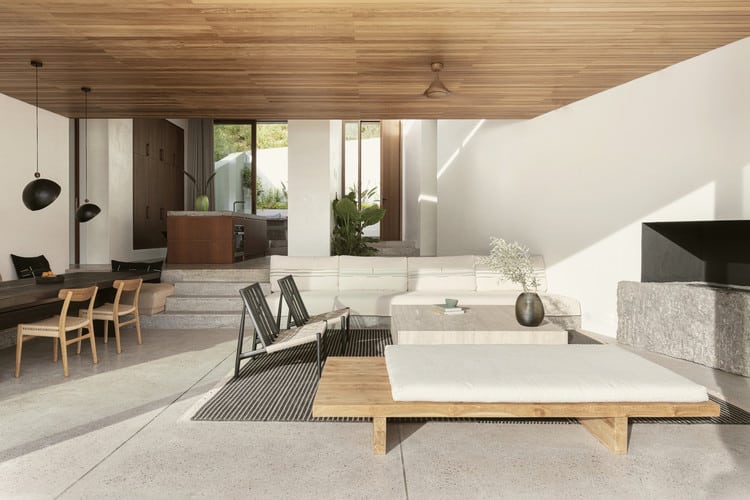Your home is more than just a place to live; it’s an expression of your personal style and taste. Just as a painting reflects an artist’s creativity, your home reflects your vision, and architecture plays a pivotal role in bringing that vision to life. In this blog post, we delve into the artistry in architecture, exploring how it defines home aesthetics and creates spaces that are not just functional but beautiful, meaningful, and deeply personal.
The Intersection of Art and Functionality
Architecture has a unique position at the intersection of art and functionality. It marries form and purpose, making it one of the most complex and captivating art forms. Architects are, in essence, artists who sculpt spaces, using concrete, glass, and steel as their mediums. They create environments that impact our emotions, well-being, and daily lives.
Whether it’s the sleek, minimalistic lines of a modern home, the ornate detailing of a historic mansion, or the sustainable design of an eco-friendly residence, architecture allows homeowners to express their artistic sensibilities. It transforms an ordinary structure into a canvas for creativity, giving it a unique and memorable character.
The Elements of Architectural Artistry
To understand how architecture defines home aesthetics, let’s break down some key elements:
- Design Philosophy: Every architect brings a unique design philosophy to their work. Some may favor bold, avant-garde designs that challenge convention, while others embrace traditional, time-tested styles. The chosen philosophy influences the overall look and feel of the home.
- Materials and Textures: The choice of materials, from brick and wood to glass and steel, sets the tone for the aesthetics. The juxtaposition of textures, such as rough stone against smooth glass, adds depth and intrigue to the design.
- Proportions and Scale: The proportions and scale of a home can make it feel grand and imposing or intimate and cozy. The interplay of size and shape is critical in creating the desired atmosphere.
- Light and Space: Architectural artistry uses light as a paintbrush to highlight and define spaces. Natural light, in particular, can transform a home, making it feel warm and inviting. Clever manipulation of space can create hidden nooks, open vistas, and an engaging flow throughout the property.
- Sustainable Design: The rise of sustainable architecture introduces a new dimension to aesthetics. Homes designed with eco-friendly principles offer not just beauty but also a commitment to environmental responsibility.
Personalizing Home Aesthetics
The artistry in architecture extends beyond the hands of the architects and builders. Homeowners also play a significant role in defining their property’s aesthetics. Here’s how you can personalize your home’s aesthetics:
- Reflect Your Personality: Your home is an extension of your identity. Fill it with objects, colors, and designs that resonate with you and reflect your personal style.
- Art and Décor: Invest in art pieces and decorative items that resonate with you. Art can become the focal point of a room, shaping its aesthetics.
- Install a Home Elevator: One way to enhance the functionality and aesthetic appeal of your home is by installing a home elevator. Consider seeking the services of affordable home elevators in St. George, UT.
- Collaboration with Architects: When building a custom home, work closely with your architect. Share your vision, preferences, and inspirations. The synergy between your ideas and their expertise can lead to truly remarkable designs.
- Continual Evolution: Aesthetics aren’t static. Over time, your tastes and preferences may evolve. Don’t be afraid to modify and update your home to keep it aligned with your evolving sense of aesthetics.
The Influence of Local Culture
Architecture also has a deep connection to the culture of a region. Different parts of the world have distinctive architectural styles and elements that reflect their heritage, climate, and values. Embracing these local architectural traditions can create a sense of belonging and connection to the community.
For example, a home in the Mediterranean may feature whitewashed walls and terracotta tiles, while a home in Japan may incorporate traditional Shoji screens and Tatami mats. The integration of local culture into the design can enrich the aesthetics of your home and celebrate the uniqueness of your surroundings.
The artistry in architecture is a powerful force in shaping the aesthetics of your home. It’s a creative endeavor that goes beyond mere functionality to create spaces that inspire, soothe, and delight. Whether you’re building a new home or seeking to enhance your current one, remember that your home is your canvas, and architecture is the brush that helps you paint the picture of your dreams. Embrace the artistry in architecture to define a space that is uniquely and beautifully yours.

